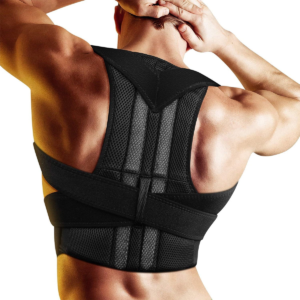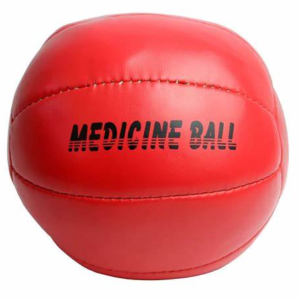Ice baths, the practice of submerging yourself in near-freezing water, have become a popular trend amongst athletes and health enthusiasts alike. Images of elite runners and weightlifters braving icy water after intense workouts flood social media, leaving many wondering – are ice baths worth the chill?
This article delves into the science behind ice baths, exploring their potential benefits, risks, and who might find them most advantageous.
The Science of Shivering: How Ice Baths Work
When you enter icy water, your body goes into fight-or-flight mode. Your blood vessels constrict to prioritize keeping your core temperature warm. This reduction in blood flow to the muscles is thought to be the mechanism behind many of the proposed benefits of ice baths.
The Benefits Debate: Does the Chill Deliver?
The research on ice baths is ongoing and inconclusive. While some studies show potential benefits, others find little to no advantage over other recovery methods. Here’s a closer look at some of the claims associated with ice baths:
Reduced Muscle Soreness: A common belief is that ice baths can help reduce muscle soreness after exercise. The constriction of blood vessels may limit inflammation and muscle breakdown following a workout. However, studies haven’t shown a clear consensus on their effectiveness in reducing soreness.
Faster Muscle Recovery: The restricted blood flow during an ice bath may also aid in muscle recovery by reducing swelling and promoting the removal of waste products like lactic acid. Again, research findings are mixed, with some studies suggesting a slight improvement in recovery time and others showing no significant difference.
Improved Sleep: Some athletes report better sleep quality after taking an ice bath. The physiological response to cold water exposure may trigger the release of hormones like norepinephrine that can promote sleepiness. Nevertheless, additional investigation is required to validate this association.
Mental Toughness: The mental challenge of withstanding the cold of an ice bath is often cited as a benefit. Some believe it can build mental resilience and improve pain tolerance. While there’s limited scientific evidence to support this claim, the mental focus required during an ice bath might be beneficial for some athletes.
Beyond the Benefits: Considering the Risks
Ice baths aren’t without risks. Here are some important considerations:
Cold Shock: Entering icy water can trigger a dangerous reflex known as the cold shock response, leading to rapid breathing, increased heart rate, and unconsciousness. It’s crucial to enter the water gradually and avoid submerging your head.
Hypothermia: Prolonged exposure to cold water can lead to hypothermia, a condition where your body temperature falls below safe levels. Limit ice bath duration to 10-15 minutes and monitor your body temperature.
Circulatory Issues: People with certain heart conditions or circulatory problems should avoid ice baths as the cold water can further stress the cardiovascular system. Consult your doctor before trying ice baths if you have any pre-existing medical conditions.
Discomfort and Anxiety: Ice baths are undeniably uncomfortable. The intense cold can be shocking and cause anxiety, especially for first-timers. Pay attention to your body’s needs and refrain from overexerting yourself.
Taking the Plunge: Is an Ice Bath Right for You?
Ice baths may hold some promise for athletes and individuals looking to enhance recovery and potentially improve sleep. However, the research is inconclusive, and they certainly aren’t a magic bullet. Here are some factors to consider before deciding if ice baths are right for you:
Your Activity Level: If you’re a weekend warrior or engage in moderate exercise, ice baths likely won’t offer significant benefits. They are more relevant for serious athletes or individuals participating in intense training programs.
Your Pain Tolerance: Ice baths are uncomfortable. If you have a low tolerance for cold, you might find them more harrowing than helpful.
Alternative Recovery Methods: There are many other evidence-based recovery methods like active recovery exercises, compression garments, and massage therapy. Consider these options first and discuss them with a healthcare professional or athletic trainer.
The Takeaway: Embrace What Works for You
Ultimately, the decision to try ice baths is a personal one. If you’re curious and meet the safety criteria, approach them with caution and gradually increase your duration and frequency. Listen to your body and pay attention to how you respond.
Remember, there are many effective recovery methods available. Focus on finding a holistic approach that works best for you to optimize your performance and well-being.
FAQs
What are the potential benefits of ice baths?
While research on ice baths is ongoing, here are some potential benefits athletes and fitness enthusiasts commonly search for:
Reduced Muscle Soreness: A widely discussed benefit is the potential for ice baths to lessen muscle soreness after exercise. The theory is that cold water constricts blood vessels, reducing inflammation and pain. However, studies haven’t always shown conclusive results.
Faster Muscle Recovery: Some research suggests ice baths might aid muscle recovery by reducing muscle breakdown and promoting repair. However, more evidence is needed.
Improved Sleep: The cold shock from an ice bath can activate the parasympathetic nervous system, which promotes relaxation and potentially better sleep quality after a tough workout.
Mental Toughness: The mental challenge of enduring an ice bath can build mental resilience, potentially benefiting athletic performance.
Are ice baths right for everyone?
While generally safe for healthy adults, ice baths are not for everyone. Here’s why you might want to consult a doctor first:
Pre-existing health conditions: If you have any heart problems, high blood pressure, or circulatory issues, avoid ice baths without consulting a doctor.
Pregnant or breastfeeding: Cold water immersion is not recommended during pregnancy or breastfeeding.
What are some things to consider before taking an ice bath?
Listen to your body: Don’t push yourself too hard. Discomfort is okay, but stop if you experience pain, numbness, or dizziness.
Gradually acclimate: Start with short durations (2-3 minutes) and gradually increase as you tolerate it.
Warm up first: Take a warm shower or bath beforehand to ease the transition.
Focus on breathing: Deep, controlled breaths can help manage the initial shock.
Have a buddy: Especially for beginners, having someone nearby for safety is recommended.
What are some downsides to ice baths?
While potentially beneficial, some downsides include:
Discomfort: Ice baths are undeniably uncomfortable, especially at first.
Limited research: More high-quality studies are needed to confirm the long-term benefits of ice baths for everyone.
Not a magic bullet: Ice baths should not be seen as a replacement for proper recovery practices like sleep, nutrition, and stretching.
What do Youtube videos say about ice baths?
Many Youtube videos discuss ice baths, offering personal experiences and anecdotal evidence of benefits. Remember, individual results may vary. It’s critical to listen to your body and seek reputable sources.
Should I try ice baths?
The decision is yours! Ice baths are a practice with a long history and potential benefits for athletes and fitness enthusiasts. If you’re healthy, curious, and willing to brave the cold, give it a try – gradually and with caution! You might be surprised by the positive effects. However, prioritize your safety and consult a doctor if you have any concerns.
To read more, Click Here.



